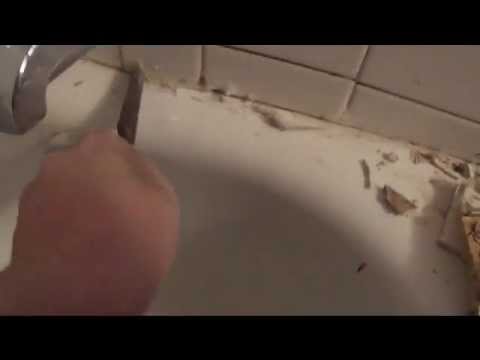Contents
Looking for a Best Way to Remove Grout?
When regular cleaning fails, here are your options
If a stiff brush and grout cleaner just won’t do the job, don’t give up. There are other steps you can take to clean, renew or replace ugly grout.
Steam clean
Professionals often use steam to clean grout, and so can you. A household steam cleaner doesn’t have the power or speed of a pro model, but with a little extra patience, it will deep-clean grout effectively. In most cases, steam cleaning is faster and easier than scrubbing—though working with steam in a small space is a hot, sweaty job. Switch on the bath fan!
Bleach away mildew
Bleach is an effective way to clean off and kill mildew, even mildew that’s growing deep in the grout’s pores. Sponging on a bleach-and-water mix is fast. But if you have only small areas to treat, use a bleach pen and avoid the nasty fumes. Either way, you may also have to scour with a brush. Don’t expect bleach to prevent future trouble—mildew always returns eventually.
Coat it with color
Grout coloring products are available at most home centers. They’re basically paint-like coatings that can be applied by brush or pen to mask stains. If you don’t find the color you want at a home center, you’ll find many more color options online. You can change the color of your grout, but remember that the coating will eventually wear. And as that happens, a color that’s similar to the underlying grout will look better than a drastically different color.
Seal out future stains
Grout is hard to keep clean because it’s porous. So when you finally get grout clean, your next step should be to seal it. Grout sealer plugs tiny pores, repels future stains and make regular cleaning easier. The life span of sealer depends on its location and the quality of sealer itself. On a kitchen backsplash, a good sealer will continue to repel stains for a few years. In a shower that gets daily use, you may need to reseal every year.
Beware of acidic cleaners
The toughest grout cleaning products don’t just remove stains; they actually eat away at grout, removing a thin layer of its surface. If you use them regularly, you’ll eventually destroy the grout. So check the label. If it includes a caution against regular use, don’t ignore it.
Replacing grout
Some grout is just plain hopeless: It’s so deeply stained that cleaning won’t help, it’s a unique color that can’t be coated over, or it’s so badly eroded that it’s falling out. In cases like these, regrouting is the solution. It’s a common DIY project, but requires patience, know-how and a few special tools. The good news is that newer grout formulations resist staining much better than your old grout—so you can look forward to easier cleaning. Whether you do it yourself or hire a pro, here’s the basic process:
1. Grind out the old grout
There are several ways to remove grout. In most cases, an oscillating tool fitted with a grout blade is the fastest, easiest approach.
2. Pack in the new grout
Grout is a cement-based powder that you mix with water. As you spread it over tile, grout fills the spaces between tiles.
